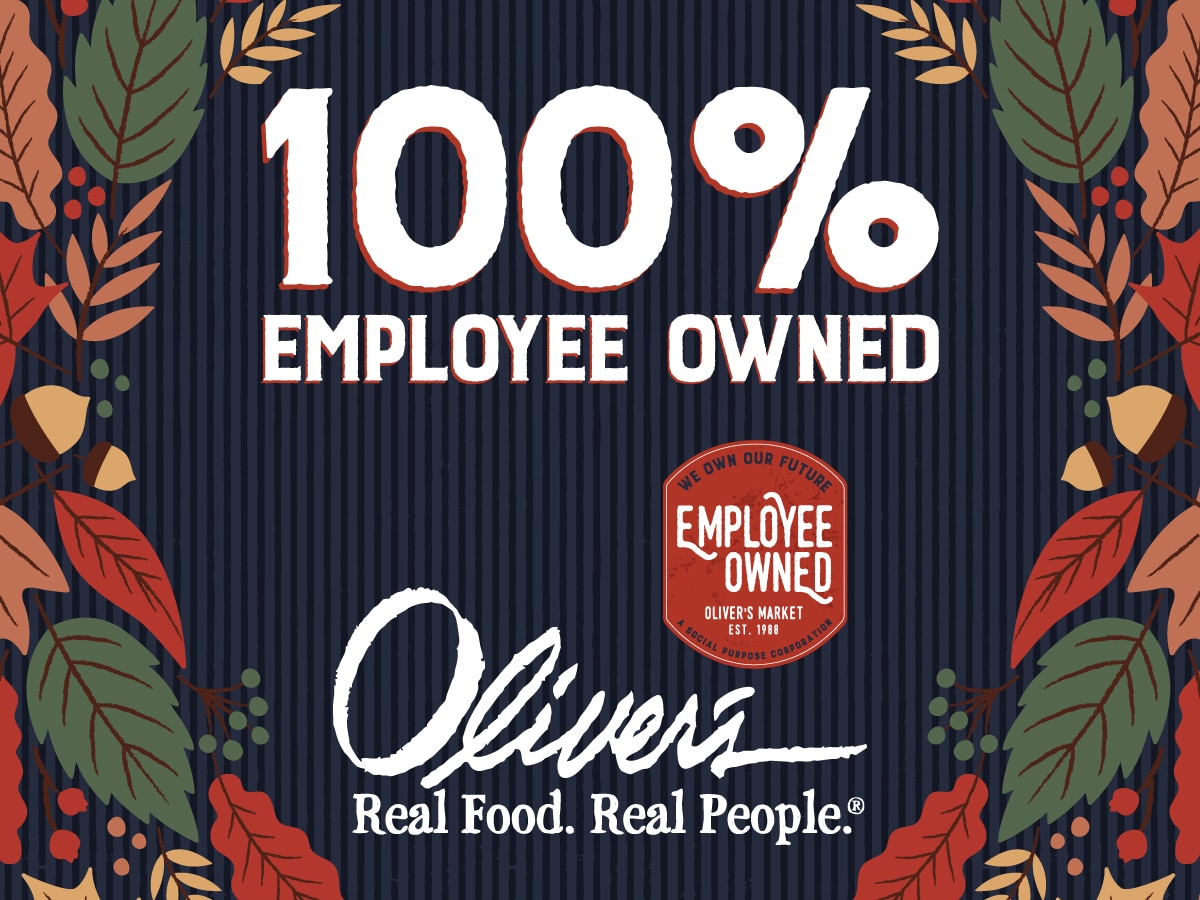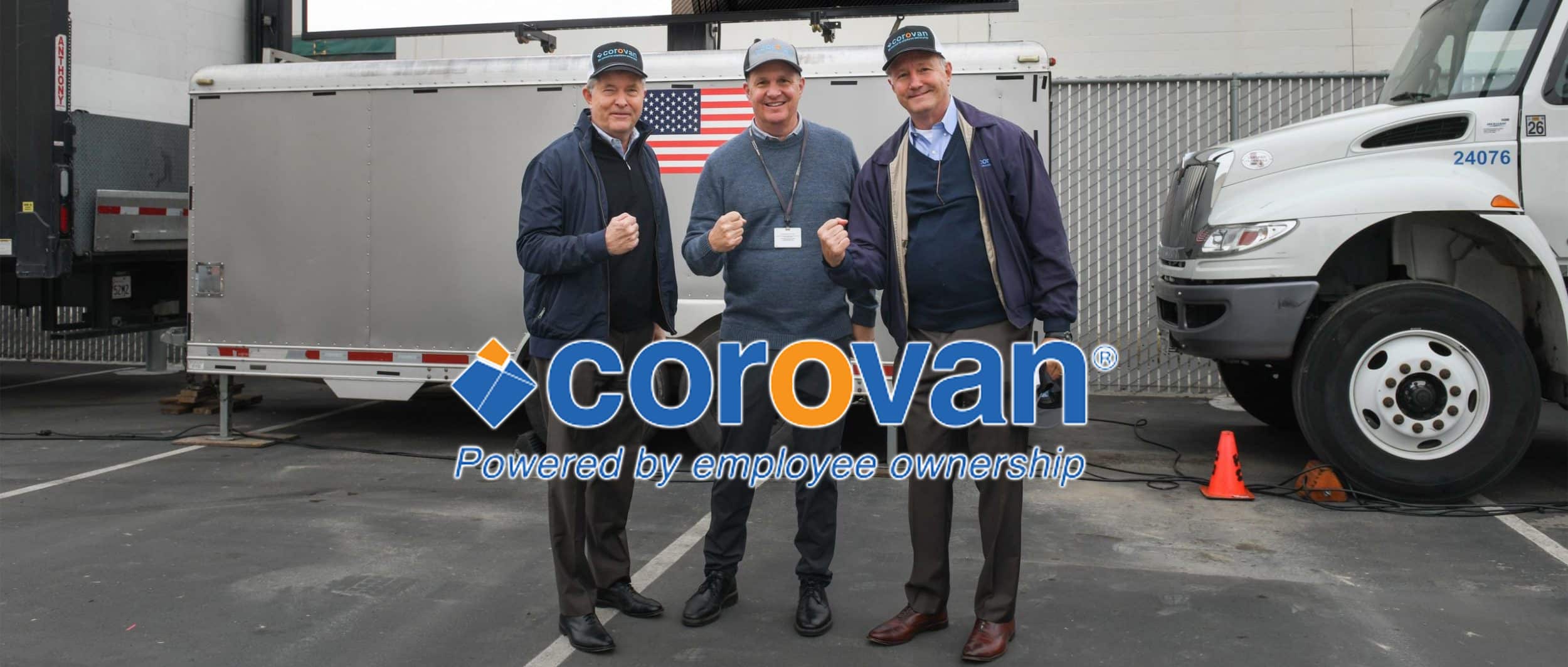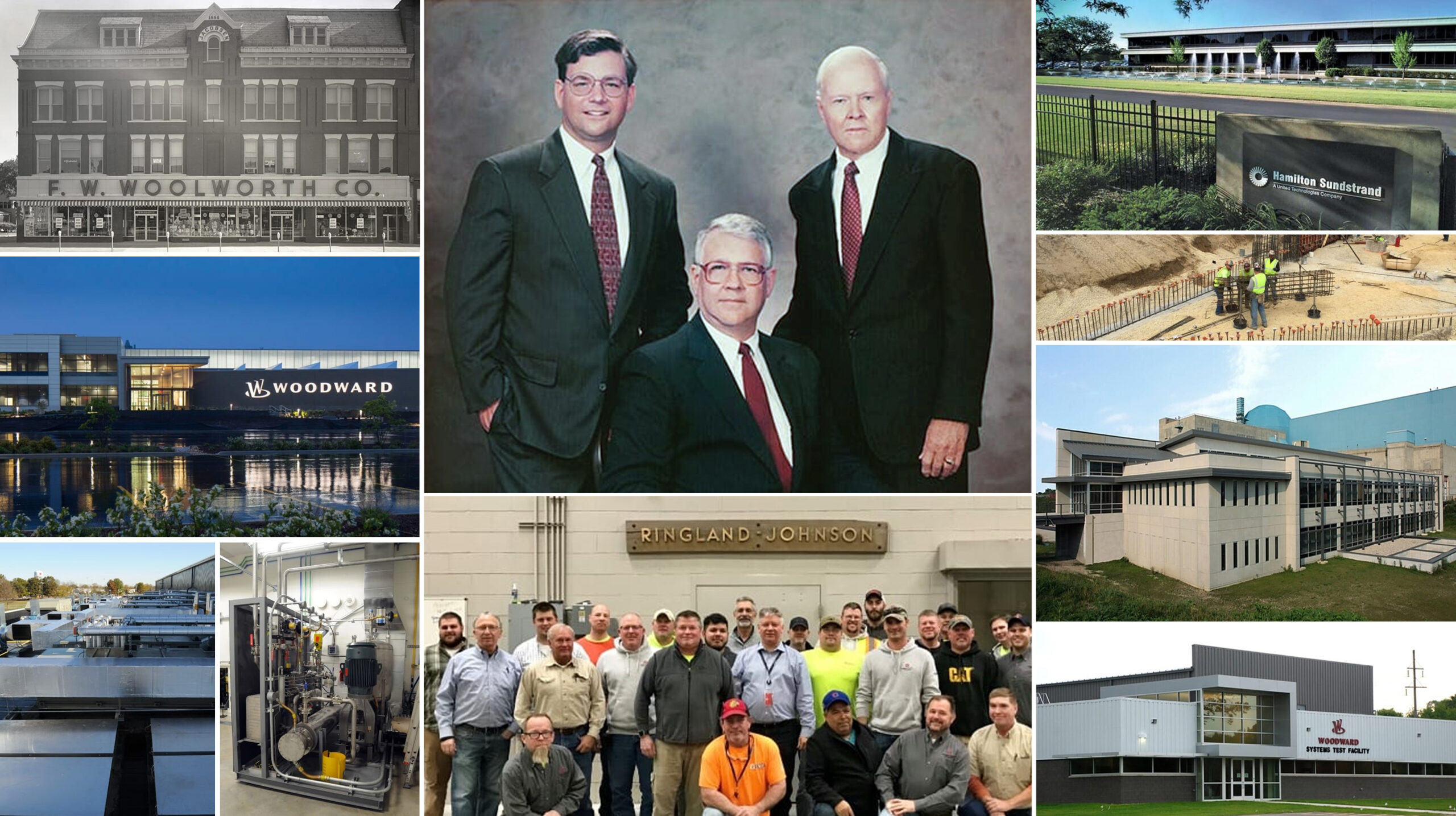
John D. Menke wrote the original ESOP legislation
Socialism and communism developed as a reaction to the concentration of ownership and the abusive labor practices that developed in the early stages of capitalism. However, after nearly a century of conflict between these two competing economic systems, a century that witnessed two world wars and a protracted cold war, we have seen in the past 10 years the almost complete collapse of all forms of socialism and communism which were based upon public or state ownership of the means of production. Today, China is the only major industrialized nation which still has an official policy of state ownership of the means of production, although here too this policy is being rapidly eroded by the growth of the private sector economy.
However, despite the apparent triumph of capitalism over socialism and communism, despite the passage of labor law legislation during the New Deal era prohibiting child labor practices, unfair labor practices, and unsafe conditions of employment, and despite extensive labor law legislation in the 1980s and 1990s prohibiting virtually every form of discrimination in employment, including race, religion, color, country of origin, sex, age, and physical or mental disability, it is clear that we have done very little to correct the inherent defect of capitalism, e.g. capitalism’s structural bias towards concentration of the ownership of capital.
The result is a concentration of ownership that, as of the beginning of the new millennium, threatens to drive our economy once again into a deep and prolonged depression similar to the great depression of the 1930s. Unless corrected, our current financial system will inevitably lead to a complete erosion of purchasing power by 95% of our population. If we do not reverse this trend, we will soon eliminate the American “middle class”, and we will become a society of “haves” and “have-nots” like most third world countries.
Clearly the federal government is doing all that it can to stimulate business and consumer spending by lowering interest rates, pumping billions of dollars into the banking system and increasing federal spending on defense and infrastructure. Yet these macroeconomic measures, although laudable and necessary in the short run, will only serve to postpone the day of reckoning. The problem is far more serious than the immediate pending recession would indicate.
How Bad Is The Problem?
The magnitude of the problem was masked until recently by the stock market boom of the 1990s. Although the stock market gains appeared to be broadly based, in reality only a very small percentage of the population enjoyed significant increases in wealth and in purchasing power. According to Jeff Gates, author of the book, Democracy at Risk (Cambridge, MA: Perseus Publishing, 2000), pp. xiii-xiv, the real facts are these. As of 1998, the financial wealth of the top 1% of U.S. households exceeded the combined wealth of the bottom 95%. From 1997 to 1999, the wealth of each of the nation’s 400 richest families grew by an average of $940 million, whereas over a recent 12 year period the net worth of the bottom 40% of U.S. households plummeted 80%. In 1998, the wealth amassed by Bill Gates exceeded the combined net worth of the poorest 45% of American households.
In 1998, the top-earning 1% had as much income as 100 million Americans with the lowest earnings. In 1980, the pay gap between top executives and production workers, excluding stock options, was 42:1. By 1998 this ratio had skyrocketed to 419:1. Meanwhile, the wages of American wage earners are 7% lower than in 1973, and 1 in every 4 preschoolers lives in poverty.
Why Is Concentration of Ownership So Troublesome?
According to Arnold Toynbee, there are two common factors that led to the failure of 21 past civilizations: concentrated ownership, and inflexibility in light of changing conditions.
Toynbee’s conclusion that concentrated ownership has led to the failure of so many past civilizations raises two interesting questions. First, how is it that the concentration of ownership results in social disintegration? And second, if in fact concentration of ownership has had such a devastating effect, why is it talked about so little?
How Does Concentration of Ownership Result in Social Disintegration?
The process of social disintegration is well described by Lester Thurow in his book, The Future of Capitalism (New York, NY: Penguin Books, 1996), pp. 261, 265, 268, and 309, as follows:
Consider the slide from the peak of the Roman Empire to the bottom of the Dark Ages. With the onset of the Dark Ages (476 to 1453), real per-capita incomes fell dramatically from their imperial Roman peak. The technologies that allowed the Roman Empire to have much higher levels of productivity did not disappear. The rate of invention was actually up from the Roman era. Output was down despite those new and old inventions. The devil appeared in the form of social disorganization and disintegration. Ideology, not technology, began the long downward slide.
In the Dark Ages the public interest was squeezed out by the private interest. Banditry became widespread and was seen as a revenge upon the defenders of the political and social order (thus, the legend of Robin Hood).
As the Roman Empire slid into the depths of the Dark Ages, the private gradually squeezed out the public until the private sector had effectively swallowed everything, and the public sector disappeared. The intense devotion of the Romans to the republic was lost.
No one can know exactly what will happen in our society if inequality continues to rise and a large majority of our families experience falling real wages.
Without social organization, everyone has an incentive to be a “free rider,” enjoying whatever benefits exist without putting in any effort to preserve the system that makes the benefits possible in the first place.
While one can argue about how many actually had it, the implicit post-World War II social contract has been shattered.
History shows us that very different balances between public and private and between consumption and investment are possible, but it also shows us that it is not possible to run a good society without a balance in both areas. All “public,” the model of communism, does not work. All “private,” the model of feudalism, and the implicit model of capitalism, also does not work. Neither all-consumption nor all-investment can work. In the era ahead, capitalism will have to create new values and new institutions that allow a new strategic balance in each of these areas.
The same admonitions have been made more recently by George Soros in his book, The Crisis of Global Capitalism (New York, NY: PublicAffairs, 1998), pp. xxii, xxvii, and 170, as follows:
Eventually the markets should go much lower, leading to a global recession. The disintegration of the global capitalist system will prevent a recovery, turning the recession into a depression.
Capitalism, with its exclusive reliance on market forces, poses a different kind of danger to open society. The central contention of this book is that market fundamentalism is today a greater threat to open society than any totalitarian ideology.
Capitalism needs democracy as a counterweight because the capitalist system by itself shows no tendency toward equilibrium. The owners of capital seek to maximize their profits. Left to their own devices, they would continue to accumulate capital until the situation became unbalanced.
This time the danger comes not from communism but from market fundamentalism. Communism abolished the market mechanism and imposed collective control over all economic activities. Market fundamentalism seeks to abolish collective decision making and to impose the supremacy of market value over all political and social values. Both extremes are wrong.
Unfortunately, the end of the cold war and the collapse of Communism has led to a false conclusion on the part of many that, since market capitalism has been triumphal, free market principles should be elevated above all other considerations. Clearly, both the premise and the conclusion of this argument are mistaken. It was not unfettered, “survival of the fittest” capitalism that was victorious over communism. Rather, it was democratic capitalism ― a capitalism modified by social welfare legislation and public interest considerations ― that was victorious over communism.
During the past decade since the fall of communism, we have witnessed an unprecedented surge of market fundamentalism and private interest considerations, and a corresponding decline in public interest considerations. What is needed is not a return to “survival of the fittest” capitalism. What is needed is exactly the opposite, if our democracy is to survive. As demonstrated by history, what is necessary to prevent social disorganization, especially in a democracy that no longer faces external threats, is an economy that balances the public and the private, e.g., a society which fosters less inequality rather than more inequality. What is needed is not simply a new “New Deal.” What is needed is a “Restructuring of America.”
Why Is the Ownership Question Ignored?
To return to the second question, why is the ownership problem and the ownership solution so seldom considered?
There are four reasons for this enigma.
The first reason is that for the greater part of our nation’s history, we did not have an ownership problem. Throughout most of the 18th and 19th centuries, our economy was fueled by agriculture and by small business. Since almost no equity was needed to acquire a homestead or to start a small business, everyone had a more or less equal opportunity to build a capital estate. Lack of access to credit was not an overwhelming impediment for the average fledgling capital owner. Credit was, of course, useful to those seeking to expand their small enterprises, but as long as initial equity requirements were small or nil, it was possible for a high percentage of the population, millions of farmers and shopkeepers, to build a significant capital estate. Democratic capitalism flourished because broad ownership of capital stimulates enterprise.
However, as the country shifted from an agrarian economy to an industrial economy, both start-up costs and expansion costs increased very significantly. The structure of providing ready credit only to those who already possessed capital had the effect of concentrating the ownership of capital rather than broadening the ownership of capital. The eventual consequence was the Great Depression of the 1930s, the near-collapse of the economy in 1974-1975, and the economic slowdown of 1990-1991.
The second reason for avoiding any discussion of the ownership problem is that macroeconomic solutions are easier to implement and much less controversial than microeconomic solutions. Thus, rather than correcting the structural problems which created the concentration of ownership, the attempted governmental solutions have for the most part involved macroeconomic attempts to solve the problem by manipulating the supply of money or by redistributing income. For example, the solution to the Great Depression was the wholesale adoption of “demand-side economics,” whereby the economy was stimulated with money provided by the creation of the Social Security Administration, the Public Works Administration, and other such New Deal legislation. What demand-side economics did was to redistribute income to the impoverished so that they would have the purchasing power to restart the economy.
In the 1980s this approach was replaced by “supply-side economics,” whereby it was assumed that by giving tax credits and tax savings to the wealthy, the economy would be stimulated by the increased spending on investments and on consumption by the wealthy.
Neither of these solutions addressed the microeconomic cause of the problem, which is the fact that in either case, those who own properties (land, building and businesses) get richer, and those who own only labor get poorer.
A third reason for avoiding any discussion of the ownership problem is that we have inherited a philosophical concept of private property which has prevented us from considering any solutions that involve limitations on ownership.
As pointed out by Walter Lippmann in his book, The Public Philosophy (New York, NY: Mentor Books, 1955), p. 90, it was William Blackstone, working in the mid-18th century (Commentaries on the Laws of England, Book I, Ch. 1) who promulgated the theory of absolute ownership of private property:
He had declared that security of the person was the first, that liberty of the individual was the second, and that property was “the third absolute right inherent in every Englishman.” (Emphasis added.)
In point of fact, it appears that Blackstone’s language was twisted. What Blackstone meant in this quotation is that every individual has an absolute right to own property. This is not the same as saying that ownership rights in property are absolute.
Thus, as noted by Lippman, p. 92, Blackstone stated at a later point in the first chapter of his book that:
“…a man’s property…consists in the free use, enjoyment and disposal of all his acquisitions, without any control or diminution, save only by the laws of the land. The origin of private property is probably founded in nature, but certainly the modifications under which we at present find it, the method of conserving it in the present owner, and of translating it from man to man, are entirely derived from society; and are some of those civil advantages in exchange for which every individual has resigned a part of his natural liberty.
Nevertheless, according to Lippmann, pp.93-94, Blackstone must be credited with departing from the classical conception of private property.
When Blackstone, though his conscience was troubled, accepted the sole and despotic dominion, he broke with the public philosophy and the traditions of civility. After his break the recognized theorists developed regressively the conception of private property as an absolute right. For a time they excluded from political philosophy, from jurisprudence and from legislation, almost any notion that property had duties as well as rights.
But for several generations after Blackstone, the very idea of property as a system of duties was obscured. The public philosophy was discarded, and the most humane and enlightened men of the nineteenth century had little notion how rational reforms could be made.
It is interesting to note that the Declaration of Independence proclaims the rights to life, liberty and pursuit of happiness as inalienable human rights, but fails to mention the right to own property. Nevertheless, from the very beginning of our nation, it was assumed, following the Blackstone theory, that every individual has an absolute right to own property and that ownership rights in property are more or less absolute.
Thus, except for the concept of eminent domain, and except for estate taxes and inheritance taxes, our legal system has, by and large, avoided any attempts to redistribute property. With the advent of the Great Depression and the New Deal, we have had numerous programs to redistribute income, including social security taxes, unemployment insurance taxes, the progressive income tax, and Medicare and Medicaid, but we have not adopted any programs, such as a wealth tax, for example, that would serve to redistribute principal.
The fourth reason why the ownership problem is never discussed is that the problem is more or less invisible to the average person and to those who are involved in politics and government.
It was Louis and Patricia Kelso who first discovered and unmasked the inherent structural defect of capitalism, which they referred to as “the invisible violence of corporate finance.” In hindsight, the inherent structural defect of capitalism should have been fairly evident. It is simply this: The ownership structure of corporations creates a closed loop of ownership which is in turn augmented and multiplied by a closed loop of finance. Corporations are invariably formed by individuals who have saved a small amount of equity necessary to launch a business. Once a corporation is formed, 95% of all the capital that is needed for growth and expansion is obtained from retained earnings and from corporate debt, rather than from the sale of new equity. Thus, as companies grow and expand, the original founders enjoy 100% of the growth in equity, while employees are limited to annual increases in wages and fringe benefits.
How Can This Defect Be Corrected?
It was also Louis and Patricia Kelso who first devised the ESOP as a financial structure that could be used to reverse the inherent structural defect of capitalism. Here is how the ESOP can be used to accomplish this result.
An ESOP is a tool of corporate finance that enables a company to borrow money for growth and expansion and repay that financing with pre-tax dollars rather than with after- tax dollars. This is accomplished by forming an IRS qualified employee benefit plan and trust, similar to a profit sharing plan and trust, which must include all employees who have more than one year of service. The trust then finances corporate growth by borrowing money to purchase newly-issued shares of company stock. Thus, for example, if a company wants to borrow $10 million in order to build a new plant, this can be financed through the ESOP by having the ESOP borrow $10 million, which the ESOP then uses to purchase $10 million of newly-issued stock from the company. The company then uses the money to construct the new plant.
The stock that is purchased by the trust is held in a suspense account within the trust. Each year, the company makes tax-deductible contributions to the trust, and the trust uses these contributions to pay down the loan. As the loan is paid down, a pro rata portion of the stock is released from the suspense account and allocated to the employee participants in proportion to their respective salaries. For example, if the loan is paid off in level annual payments of principal over 10 years, one tenth of the shares will be allocated to the participants each year. Thus, the ownership of capital is automatically broadened as the debt is repaid. The stock is held in trust until the employee terminates employment, retires, dies or becomes permanently disabled, at which time the stock is repurchased by the trust and paid for either in a lump sum or in a series of five annual payments.
An ESOP is also an alternative to a management buyout or to the sale of a company to a third party. In the case of an ESOP buyout, the ESOP borrows money and purchases part or all of the stock from the existing owners in exchange for cash and/or notes. Thereafter, as the company makes annual tax-deductible contributions to the trust and the trust uses these contributions to pay down the loan, a pro-rata portion of the stock that has been purchased by the trust is allocated to the employee participants in the plan. As in the prior example, the ownership of capital is automatically broadened as the debt is repaid.
How Effective Have ESOPs Been in Reversing The Concentration of Ownership?
ESOPs have proven to be highly effective in broadening the ownership of capital in privately held companies. To date, approximately 10,000 U.S. companies have adopted ESOPs, and these ESOPs now cover about 10 million workers.
Studies conducted by the National Center for Employee Ownership, by Hewitt Associates, and by a host of other research centers have shown that ESOPs are highly effective in creating a significant degree of stock ownership by employees covered by these plans. Company contributions to ESOPs typically range from 15% to 25% of annual payroll. Thus, for example, the account balance for an employee who earns $30,000 a year and who has participated for 10 or more years typically ranges from $45,000 to $150,000, depending upon the level of company contributions and upon the rate of stock appreciation.
These studies have also confirmed that company profitability and employee productivity is greatly enhanced in those cases where the ESOP is combined with a participatory management practices.
On the other hand, the number of ESOPs created each year is relatively small in comparison to the number of corporate acquisitions and management buyouts that are completed each year, and the number of employees covered by ESOPs represents only about 10% of the U.S. workforce.
What Are The Current Tax Incentives For ESOPs?
As originally contained in ERISA, the ESOP created an alternative to sale, merger or acquisition, but did not contain any tax incentives over and above those already available to companies that adopted conventional pension and profit sharing plans.
Significant tax incentives for ESOPs did not come about until the adoption of the ESOP tax incentives contained in the Tax Reform Act of 1984. The biggest tax incentive for ESOPS contained in the 1984 Act was the addition of Section 1042 to the Internal Revenue Code to give sellers to ESOPs a tax deferral of any capital gains taxation to the extent that the sellers reinvest the proceeds in other stocks or bonds within 12 months of the date of sale.
Another significant ESOP tax incentive is contained in the Tax Act of 2001. Under the Small Business Job Protection Act of 1996, the Internal Revenue Code was amended to permit the ESOP to qualify as an eligible shareholder of an S corporation. Under this Act however, the ESOP, which is normally a tax-exempt entity, was responsible for paying a so-called “unrelated business income tax” on the portion of corporate income attributable to the ESOP-owned stock. The Tax Act of 2001 has now eliminated this tax. Thus, in the case of an S corporation that is 100% owned by an ESOP, neither the company nor the ESOP will be subject to income taxation.
Clearly, the tax-deferral provisions of the 1984 Act and the S Corporation tax exemption of the 2001 Act have created significant incentives to structure buyout transactions as employee buyouts rather than as management buyouts or third-party buyouts.
The problem is that the greatest source of capital growth is through bank borrowings by existing companies, and there are currently no tax incentives that serve to reverse this result.
Under the provisions of the 1984 Act, there was a temporary tax incentive to reverse this result by providing that bank lenders would only be taxed on 50% of the interest earned on ESOP loans. However, this exclusion was thought to be of primary benefit to bank lenders, and it was killed after a relatively short period of time
What Additional Tax Incentives For ESOPs Are Needed?
If we want out children to live in a society in which ownership is broadly based rather than concentrated in the hands of a few, and if we want to live in a society in which the opportunity to own a stake in our industrial enterprises is open to everyone, not just a select few, then we must take steps now to create the proper incentives to accomplish this result
Two additional tax incentives are needed in order to accomplish this objective.
First, in order to incentivize companies to finance bank borrowings through ESOPs, the tax code should be amended to give companies a “150% ESOP Interest Rate Deduction” for interest incurred on an ESOP loan that is used to purchase newly-issued stock. Assuming a 34% corporate tax rate and a deduction equal to 150% of the actual interest expense, a company would be able to deduct 51% of its interest cost on an ESOP loan. In the alternative, a company might be given, in addition to the normal interest expense deduction, a 20% tax credit for interest paid on an ESOP loan.
It is time that we took stock of the fact that corporate bank credit is a societal asset which should be used to benefit society as a whole. Corporate bank credit should not be viewed as strictly a private asset that is available only to the wealthy. Corporate bank credit exists because millions of individuals and thousands of companies put their funds in bank checking accounts and bank savings accounts. In view of this fact, society should, in turn, insist that these funds be used to create beneficial ownership for all workers and employees who are working to increase the values of our nation’s commercial enterprises.
Second, the tax code should be amended to provide for a lower corporate tax rate for C corporations that are substantially employee owned. Such a provision might provide, for example, for a corporate tax rate that is inversely proportional to the degree of employee ownership, as follows:
Corporate Status Corporate Tax Rate
Regular C corporation 34%
ESOP owned 50%-75% 30%
ESOP owned 75%-100% 25%
What Additional Non-Tax Incentives Are Needed?
One approach which has been taken in the past is to require that any federal loan guarantees that are given to private industry be financed in such a way as to broaden the ownership of capital rather than to concentrate the ownership of capital. Thus, in the case of Chrysler, for example, the government required that 30% of the stock of Chrysler be acquired through an ESOP for the benefit of the Chrysler employees as a condition for obtaining federal loan guarantees. This policy should now be codified for airlines and for any and all industries that apply for federal loan guarantees.
Similarly, all government contractors, and all companies who do business with government contractors, should be required to provide for at least 30% ownership of these companies by their employees through an ESOP.
An alternative approach is to give ESOP-owned firms the same preferential status that is given to minority-owned firms and women-owned firms for purposes of qualifying for SBA loans and federal loan guarantees, and for purposes of bidding on government contracts.
Conclusion
The broadened ESOP ownership that would result from these tax and non-tax incentives would accomplish three objectives. First, it would restore purchasing power to the working class and to the middle class in a way that would not be inflationary. Second, as has been demonstrated by any number of studies, giving employees an equity interest in their employers generally results in significant increases in employee productivity and in company profitability. Third, increased usage of ESOPs would help to reverse the concentration of ownership and would thereby help to reduce inequality and social discontent.







